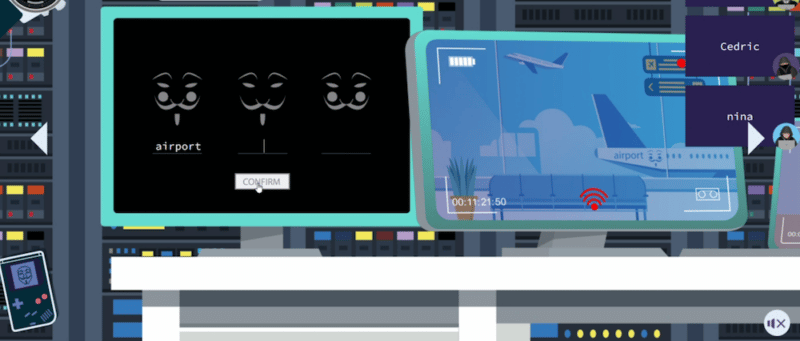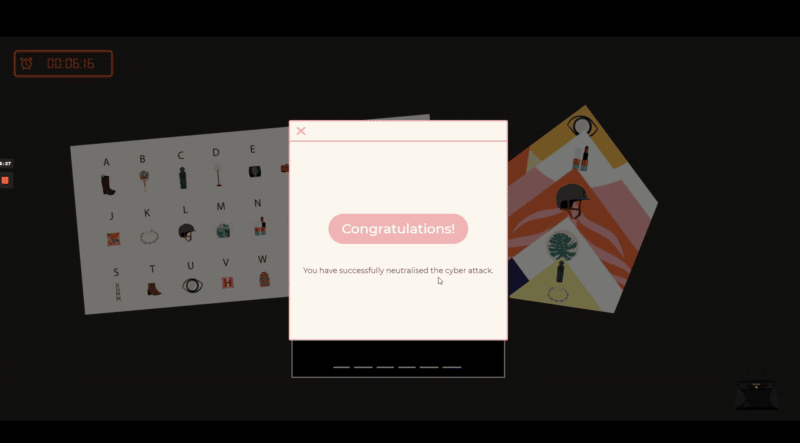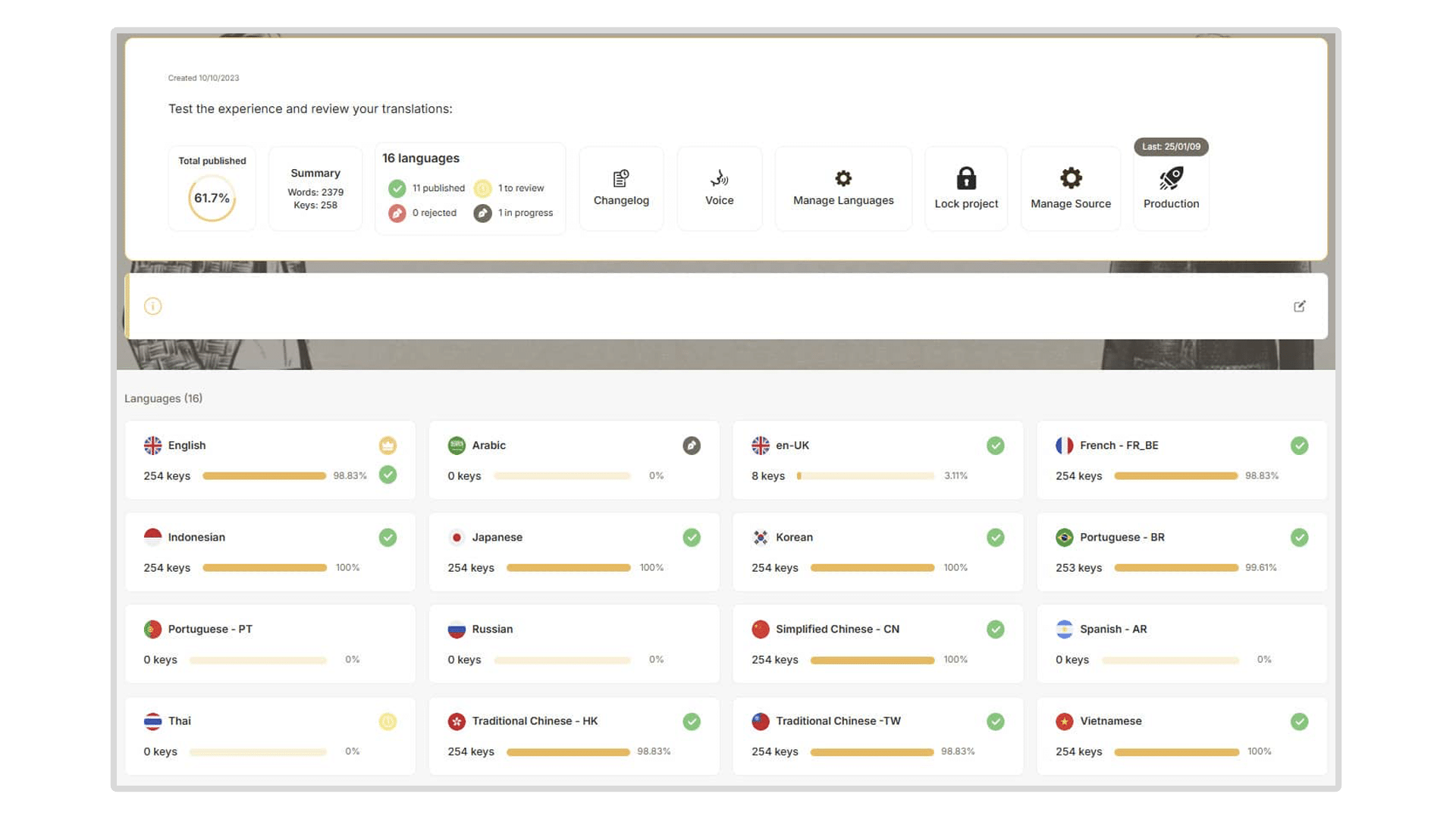
Why Should You Use Games For Your Cybersecurity Training

Never before has the concept of cybersecurity and the practice of cybersecurity training been more critical than it is now. According to data released by several security agencies, major tech companies, and even the FBI Cyber Crime division, cyberattacks have increased dramatically over the past several years, causing more than a trillion dollars in damages and losses for corporations.
Below, our experts at Emeraude Escape will explore the basics of what everyone should know about practical cybersecurity training and how companies can leverage our gamification strategies and solutions to make their training more affordable, fast, and effective.
Discover also: 9 Benefits of Team Building In The Age of Remote Work
The Basics of Cybersecurity Training That You Need to Know
Cybersecurity training- also called cybersecurity awareness training– is a process meant to deepen employees’ understanding of the use and potential implications of data security, protection methods, computer processes, resources, software, and online applications. Cybersecurity training aims to provide employees with all the information they need to keep themselves and their company safe from various cybersecurity issues that could lead to untold damages and losses.
The need to effectively train employees about key concepts related to cybersecurity is an essential reality of running a safe and successful company. And not only is an increased emphasis on cybersecurity and its training rational, but it’s also being pushed by government legislature. However, just because it’s rational and important doesn’t mean it’s always easy or affordable. Many forms of effective cybersecurity training can cost up to $5,000 or more, which makes sense considering everything it usually entails, such as;
- Record and data management
- Record and data protection
- Password safety
- Installation protocols
- Internet connection security
- Mobile, email, and internet use safety
- Policy standards and implementation
- Spam/ransomware/phishing
- Alert response procedures
All of these elements of cybersecurity training are critical because they provide employees with essential knowledge on keeping their and the company’s information safe. It also supports effective policy development, encourages personal and team accountability, and extends key responsibilities to all staff.
What is Gamification, and How Does it Work?

In short, gamification involves leveraging various game principles, mechanics, and elements within traditionally non-game-related contexts, including different types of corporate training. Some of gamification’s most frequently utilized game mechanics include rewards, goals, statuses, community, and education. For example, say a team of employees must work together to complete a digital escape room. They’ll need to rely on one another as a community and practice team building to learn about the process and achieve specific goals to win the game and (in some cases) win a reward.
By leveraging these tactics, training processes can quickly transform from boring, stuffy, and unremarkable affairs to something fun, engaging, and exciting for all participants. Gamification dramatically increases key workplace elements, including participation, learning, information retention, employee morale, teamwork, communication, satisfaction, and performance. Gamification also promotes the adoption of practical learning management tools.
Ready to update your cybersecurity training tactics? Reach out to Emeraude Escape.
What is Cybersecurity Gamification, and How Can it Enhance Cybersecurity Training?

Cybersecurity gamification involves using game principles within cybersecurity training to more effectively engage participants in solving complex problems and motivating them by introducing elements of goals, competition, and potential rewards. Because cybersecurity is often a difficult and highly-technical topic that not many people want to delve into or deal with, cybersecurity gamification training can help make the process seem less daunting and makes people more willing to get involved.
According to data analysis conducted by ZIPPIA, gamification tactics made up to 90% of employees more productive and increased the overall engagement of 60% of employees. 72% of employees also noted that gamification helped motivate them to work harder at their jobs. Data also illustrates that up to 83% of workers who receive gamified workplace training methods felt more motivated. In comparison, 61% of those who received regular, more traditional-based training without gamification felt bored. Finally, the gamification elements in corporate training increased employee retention of critical information by approximately 40%.
When implementing gamification strategies into cybersecurity training efforts (or any other type of corporate training, for that matter), several tactics can help ensure the success of the training, especially when it’s leveraged over an extended period. For example;
- Using rewards keeps participants highly motivated and incentivized to perform their best, especially if significant elements of competition are involved between individuals or groups.
- Games are supposed to be fun, and ensuring that your gamification training is fun will keep people engaged and prevent boredom.
- It’s always recommended to work with gamification training professionals who knows how to get things done well. Working with a company like Emeraude Escape, for instance, is a much better idea than trying to cobble together a random training regiment with gamification elements mixed in haphazardly. Emeraude Escape also provides various gamification activities to keep things interesting, including special activities like Quiz Races and Cluedo.
- Even fun, highly successful training can be difficult for people to handle if it involves too much information, so it’s better to rely on shorter, dispersed, and to-the-point training sessions. A 30-minute session every other day for multiple weeks is often much more effective than a three-hour session held every other week.
- Different audiences need and want different things from their games and training, so it’s essential to customize gamified training efforts, so they cater to everyone.
Related: LMS User Engagement Tips: Boost Engagement With Gamification
Related: Raise awareness about cybersecurity via a digital game
Gamify Your Cybersecurity Training With Emeraude Escape

Our team of experts at Emeraude Escape hopes that the critical information above has helped explain the imperativeness of proper cybersecurity training for employees. We also hope you’ve learned a lot about how our efforts in gamification can make your training efforts faster, easier, and more effective in the long run. Please send us a message today and visit our website to learn more about our wide array of specialized gamification services. Also, feel free to explore some of the other expertly written articles on our blog, which explore a wide range of critical business topics.
Contact Emeraude Escape to take your cybersecurity training to the next level!

Discover


Book A Demo
Get a personalized demonstration by one of our game design experts.



